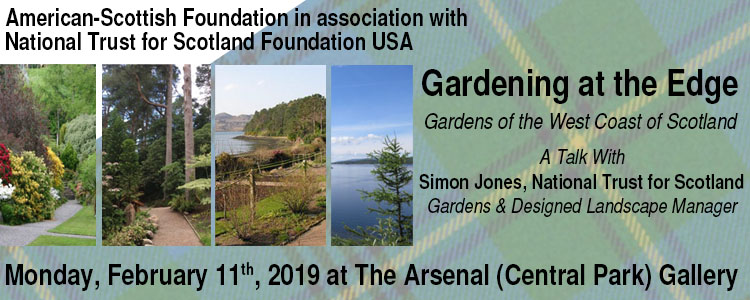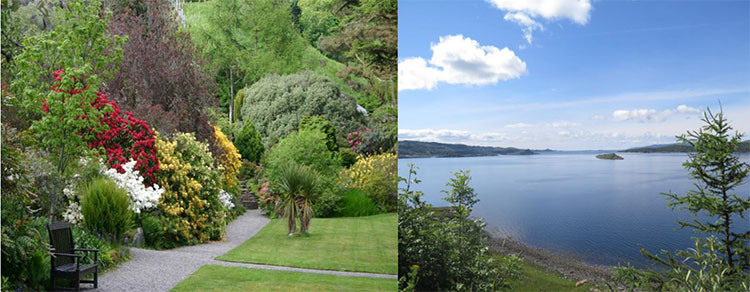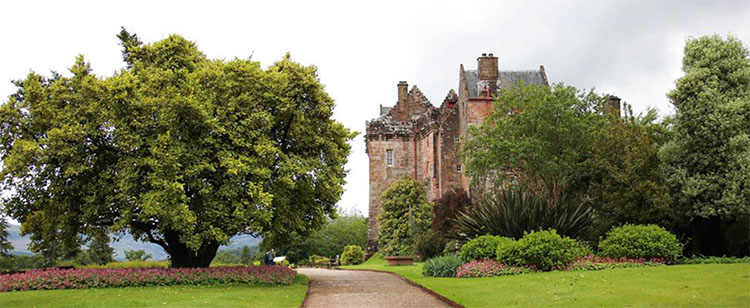American Scottish Foundation Events

Gardening at the Edge
Gardens of the West Coast of Scotland
American-Scottish Foundation
in association with
National Trust for Scotland Foundation USA
invite you to a lecture with
Simon Jones, National Trust for Scotland
Gardens & Designed Landscape Manager
Monday, February 11th, 2019
at
The Arsenal (Central Park) Gallery
830 Fifth Avenue, New York, NY 10065
6pm Program
followed by light refreshments
Tickets via Paypal
ASF/NTS USA Members $30
Guests $40
| MEMBER TICKETS $30 |
NON MEMBER TICKETS $40 |
Please call the ASF Events Office with any questions : 212 605 0338

Gardens of the West Coast of Scotland: Gardening at the Edge
An introduction to three of the most remarkable coastal gardens on the British Isles where visionary gardeners have created landscapes of extraordinary natural beauty containing both native and subtropical plants.
Simon Jones, Gardens and Designed Landscapes Manager of the west coast of Scotland for the National Trust for Scotland, will take audiences on a tour of three of the Trustís coastal gardens, of Inverewe,

created by Sir Osgood Mackenzie and begun with a deer fence and windbreak in 1862, which is now a lush, tropical oasis as well as a botanical garden of extraordinary breadth and fame; Arduaine (below), created by James and Ethyl Campbell on a barren headland in 1897, a place of peace on a wild shore, whose sheltered gardens lead to woodland trails, magnificent rhododendrons, and a stunning lookout point across the Sound of Jura to the Atlantic ocean;

and Brodick Castle, on the island of Arran, whose 74 acres of gardens include a walled garden created in 1710. There has been a fortress on this site, strategically placed at the mouth of the river Clyde, since at least the fifth century. The present castle, built by James Hamilton in 1510, was greatly improved, with the gardens becoming a passion, from 1844 under the 10th Duke of Hamilton and from 1895 when Lady Mary Louise Hamilton inherited and became the Duchess of Montrose.

Each of these gardens has extraordinary collections of subtropical plants, collected from all around the world, which flourish in a rugged landscape where there can be almost 100 inches of rain a year, strong gales, occasional snow, and summer temperatures rarely rising above 72 degrees, thanks to the passing Gulf Stream which nurtures them.
Besides taking us on a tour of these glorious gardens, Simon will explore some of the issues they face to balance the needs of history, heritage and modernity. What inspired the original creators of the designed landscapes? How do the gifted gardeners of the National Trust for Scotland adapt to a changing climate, as well as the biosecurity obstacles generated by the modern-day movement of plants and people? What does the future hold for these collections of historic landscape plants?

Simon Jonesis a horticulturist with a career interest in sustainability and environmental management. Simon is responsible for many of the National Trust for Scotlandís gardens in the Glasgow and West region.The gardens range from formal parterres and topiary to walled gardens and woodland walks, as well as the coastal gardens featured in this talk. Perhaps the most interesting and complicated are the challenges facing Arduaine Garden. Over a four-year period, the Trust must transform the garden due to a Statutory Plant Health Notice that is preventing the movement of infected plants through horticultural trade and eradicating outbreaks in garden and landscape sites across the UK. This size of restorative work has never been done within the Trust and it creates a unique opportunity to curate and design a piece of historic landscape.
After attending Stirling University, Simon started his horticultural career working in commercial horticulture in the Middle East on date trees, mangos, olives and cotton fields. Returning to Scotland, he worked as Curator of Plants and Head of Sustainability for the Royal Zoological Society of Scotland. During his time at RZSS he curated, designed and constructed over 30 exhibits, most notably for giant pandas. Simon has earned qualifications from the Royal Botanic Gardens in Edinburgh and Oatridge College, a Scottish agricultural college now known as Scotlandís Rural College; is Practitioner with the Institute of Environmental Management and Assessment (IEMA); and has volunteered for the last nine years for the Royal Caledonian Horticultural Society where he is Vice President. Simon lives in Kinghorn, Fife with his partner, Carla, and two daughters Eva and Anna.

The National Trust for Scotland was founded in 1931 to harness the energies of the people of Scotland to conserve the countryís history and its natural, built, and cultural heritage. It has grown to be Scotlandís largest conservation movement and membership organization, with 400,000 members. On behalf of the nation, the Trust now owns and manages more than 125 visitor properties on 200,000 acres, including coastlines, islands, mountains, woodlands, battlefields, castles and cottages.



